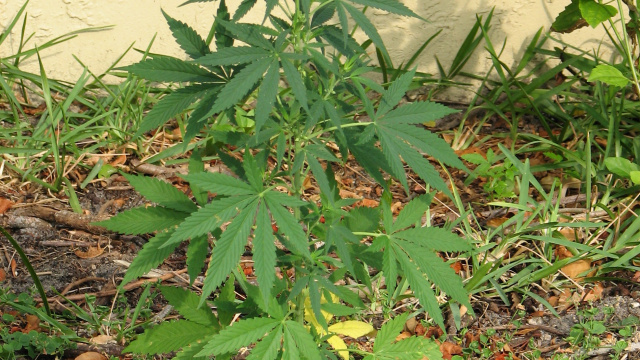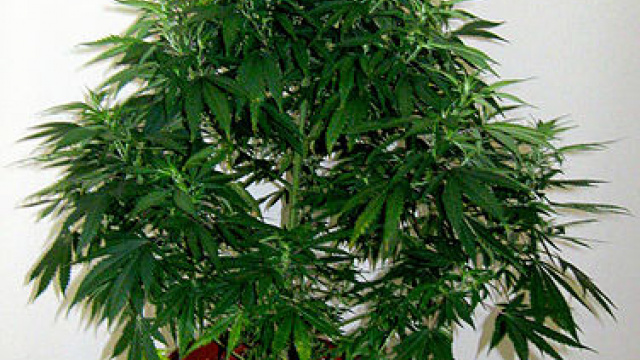 Are aging baby boomers ready to rekindle a long-ago love affair with marijuana? That is a weighty question for cultural anthropologists and cool-eyed business analysts alike as the once celebrated, later maligned, but explicitly contraband cannabis plant goes legit — for the first time in nearly 80 years — in a new era of medical and recreational use.
Are aging baby boomers ready to rekindle a long-ago love affair with marijuana? That is a weighty question for cultural anthropologists and cool-eyed business analysts alike as the once celebrated, later maligned, but explicitly contraband cannabis plant goes legit — for the first time in nearly 80 years — in a new era of medical and recreational use.
For many who smoked marijuana in their dorms in the ’60s and ’70s, it was an act of rebellion, a communal experience, and maybe a political statement. Today’s product is more likely to be marketed as anti-inflammatory than anti-establishment. And, to the distinct discomfort of some, it may come in a neat corporate package rather than an illicit nickel bag.
“I remember the smoke-filled theaters of our college years,” said Kathryn Maynes, 57, a Beacon Hill boomer who works for a real estate development firm. “There was the obligatory ‘Reefer Madness’ (film) on the screen and people blowing weed. It was very sociable. You didn’t just light up and have a joint to yourself. It was inclusive, it was friendly.”
Maynes, however, gave up marijuana in her 20s and never returned, partly because it left her with feelings of anxiety.
“If it were legalized tomorrow for recreational use, I would think twice about it,” Maynes said. “If I did it, it would only be with people I really trust.”
In fact, 20 states, including Massachusetts, already have legalized marijuana for medical purposes, while Colorado and Washington state have made recreational marijuana legal. Fully three quarters of Americans have told pollsters that they now see legalization for recreational use as inevitable, according to Martin A. Lee, director of Project CBD, a medical marijuana information service, and author of “Smoke Signals,” a social history of marijuana.
“On a cultural level, the debate is virtually over,” said Lee. “It’s widely recognized that marijuana has health benefits. For baby boomers who got high in the ’60s and ’70s, their experience was largely benign. And now it’s becoming mainstream. It’s not just long-haired rebels and stoners. It’s Mom and Dad, Republicans and Democrats, a real slice of America.”
Marijuana’s use for medicinal purposes dates back to ancient China. In the United States, it was used in a variety of treatments from the 1850s to the 1930s when, after getting snared in the Prohibition-era dragnet, it was made illegal.
The plant was formally removed from the US Dispensatory, a compendium of medicines, in 1942. But after a resurgence among hippies and college students in the 1960s, it emerged as a popular, though illegal, treatment in the 1980s for AIDS patients who found it could dull pain, stimulate appetite, and relieve nausea. That inspired a campaign to legalize or decriminalize medical marijuana in California and other states.
Since then, “it’s sort of been a U-turn back to the time when marijuana was widely used in medicine,” Lee said. The momentum was aided by a rediscovery of strains containing cannabidiol, called CBD, a marijuana component with low levels of the psychoactive agent THC. That has made it more appealing as a therapy for treating diseases ranging from cancer and Alzheimer’s to diabetes, cardiovascular disease, chronic pain, alcoholism, psychosis, and depression.
Studies project the growth of a $10 billion legal marijuana industry by 2018, and entrepreneurs and investors are scrambling to capitalize. In addition to growers and sellers, support services and enabling technologies have been cropping up in the emerging niche.
“We’ve developed two products that can help the baby boom generation adapt to all of the choices out there,” said David Goldstein, communications director for Potbotics, a Palo Alto, Calif., startup. “A lot of them feel overwhelmed by the consumer buying process.”
Later this year, Potbotics plans to launch BrainBot, a high-frequency monitoring system that can be used in doctors’ offices to evaluate the brain’s reaction to marijuana and recommend which strains might reduce anxiety or eliminate insomnia for specific patients. The company also plans to roll out PotBot, a recommendation engine in the form of an avatar that can suggest marijuana options for medical and recreational uses.
“You don’t need a doctor to talk to the avatar,” Goldstein said, suggesting an older generation may see a “paradigm shift” in how marijuana is viewed in popular culture.
“In the past, baby boomers used marijuana for the same reason they didn’t want their kids to use it. They were abusing the substance. But with the end of prohibition, everything’s been going in a good direction,” Goldstein said. “We’re giving jobs to taxpaying Americans rather than the black market or Mexican cartels.”
Younger generations may have fewer qualms about the emerging marijuana business.
Justin Desjardins, a 35-year-old Worcester man who works for a renewable energy firm, said his high school basketball career was ended when he was caught with marijuana, which he considered a victimless crime. More recently, after he injured his leg playing football at a family gathering, he said he has used it medically to help him cope with arthritis.
“I always thought that you should just make it legal,” Desjardins said. “People are finding out it’s somewhat of a miracle drug. I have no problem with it going corporate if it means you won’t ruin people’s lives if they got caught with a couple of joints.”
Source: Boston Globe (MA)
Author: Robert Weisman, Globe Staff
Published: April 13, 2014
Copyright: 2014 Globe Newspaper Company
Contact: [email protected]
Website: http://www.boston.com/globe/



Leave a Reply